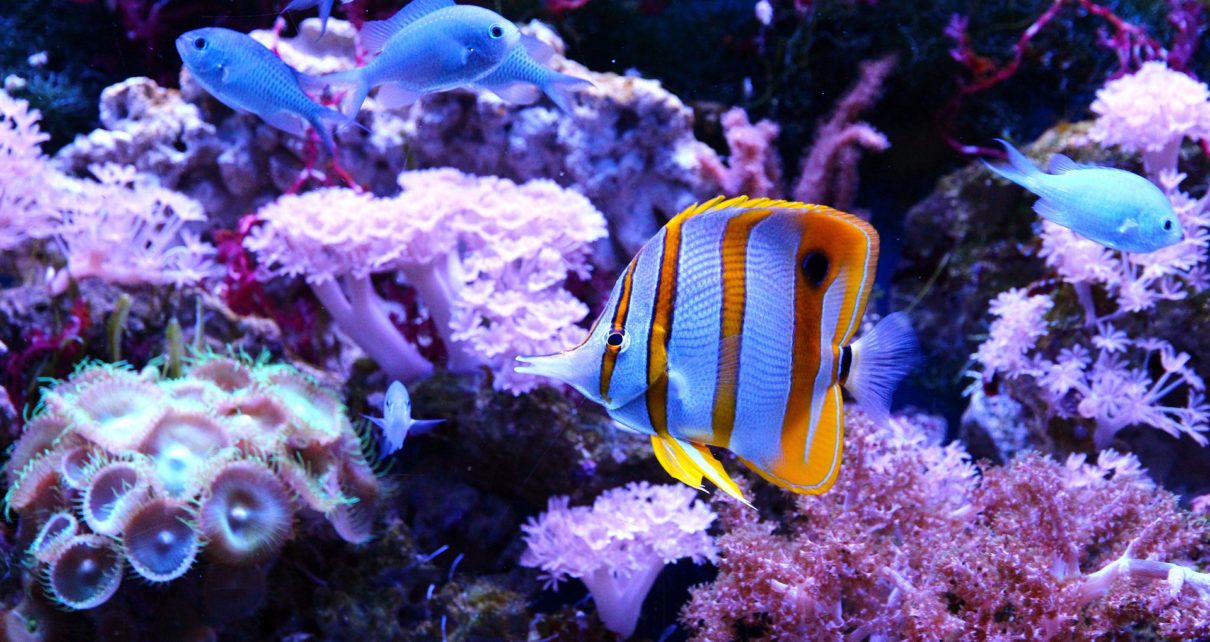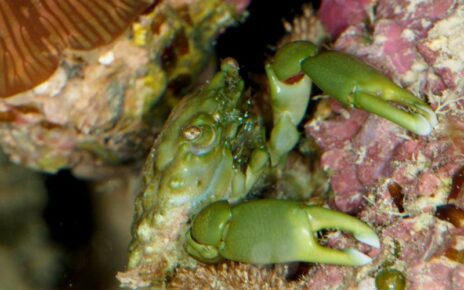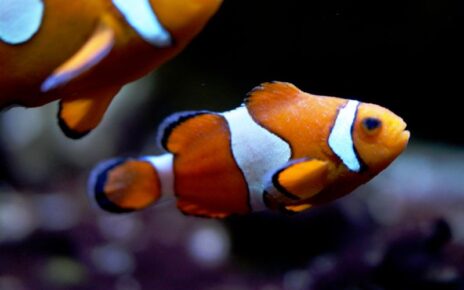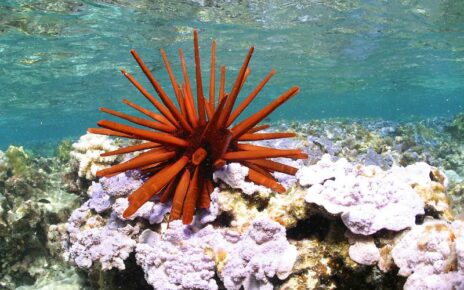Choosing the right substrate is one of the most important things you can do to establish a healthy and stable reef tank. Purchasing live sand will speed up the time it takes for your tank to cycle. This will allow you to add fish and coral sooner, and live sand will also keep your water parameters stable, so you will be less likely to lose any fish or coral. Our top pick for the best live sand for a reef tank is Carib Sea Arag-Alive Fiji Pink Sand (Buy Online).
Best Live Sand for a Reef Tank
Live Sand Reviews
Carib Sea Arag-Alive Fiji Pink Sand
Carib Sea Arag-Alive Fiji Pink Sand (Buy Online) is the best way to bring the exotic look of Fiji right into your reef aquarium. This live sand contains “Arag-Alive” which has the perfect balance of bacteria and other microorganisms to start off your reef tanks cycle. Arag-Alive will also help maintain proper water pH for the life of your aquarium.
This live sand has an off-white color with a subtle hue of pink to add a nice touch of color to the base of your aquarium. That makes this sand a great choice if you want something a little different then just a plain white sand substrate. Carib Sea Arag-Alive Fiji Pink Sand also contains Aragonite which is a rich source of trace elements and minerals. The calcium content of this sand alone is 381,000 ppm, while the carbonate level is 590,000 ppm. Along with that, there are trace amounts of strontium, magnesium, molybdenum, and potassium in this sand to help keep your coral healthy and growing.
This live sand contains fine to medium grains, so you need to take that into account when you add it to your reef tank. Some clouding will occur when you add it but it should settle in about a day. Each bag of Carib Sea Arag-Alive Fiji Pink Sand comes with a small packet of liquid clarifier, so if you are in a hurry you can speed up the settling process. If you plan on running a high flow tank, you might want to go with a coarser sand since this sand might move around in a high flow environment.
Carib Sea Ocean Direct Substrates
Carib Sea Ocean Direct Substrates (Buy Online) is perfect if you need a high quality live sand for a marine aquarium. This sand comes in original grade, which means it still has some pieces of crushed coral mixed in with fine grain sand to give a more natural look to your reef tank.
Carib Sea Ocean Direct Substrate has a white to off-white color which makes it the perfect backdrop for any kind of aquascape. Since this is a natural product color will vary, so you might get some bags that look a little beige while others will be pure white. This shouldn’t be a problem when you buy multiple bags since the colors will blend nicely when you mix the sand together.
This live sand does contain fine grains of sand, so you need to be careful if you run a high flow reef tank. If the flow is too intense the grains of sand can be blown around, and this can lead to sand dunes forming as it shifts in the aquarium. If you plan on running a high flow tank then you should go with one of the coarser live sand options in this article.
Nature’s Ocean Bio-Activ Live Aragonite Live Sand
Nature’s Ocean No.0 Bio-Activ Live Aragonite Live Sand (Buy Online) is a beautiful white sand that will make any reef tank look incredible. This sand is made up of Bio-Active Aragonite with a small to medium grain size, which makes it perfect for almost any type of reef tank setup.
If you want a nice bright white sand than this live sand is one of your best options. The color uniformity of this live sand is much better than most other “white” live sands on the market. That makes this sand the perfect backdrop for your coral colonies since the uniform white color of this sand will make a perfect backdrop.
This live sand has been carefully collected and packaged to ensure you get a fully colonized live sand upon delivery. The grain size of this live sand ranges from 0.1 to 0.5 mm, which means it is a little coarser than some of the other live sand options in this article. That means you can use this sand in a medium to high flow tank without needing to worry about it being blown all over the aquarium.
Nature’s Ocean Bio-Activ Live Aragonite Beach Live Sand, Black
Nature’s Ocean Bio-Activ Live Aragonite Beach Live Sand (Buy Online) is one of the best live sands for a nano reef tank. This black live sand is the perfect substrate if you want to simulate a volcanic beach in your aquarium.
The black sand will make any rock work and coral you add to your tank look even more vibrant under optimal lighting. This sand also comes in small 10 pound bags, so if you want to mix it with another type of sand you can do that also.
This live sand like all other Nature’s Ocean products contains an excellent mix of nitrifying bacteria. Live aragonite sand will also help keep your reef tanks pH stable since it acts as a buffer to control swings in your reef tanks water parameters.
Nature’s Ocean Bio-Activ Black Live Sand is also perfect for high flow reef tanks since the grain size is 0.5 to 1.7mm. That means this sand won’t easily blow around, so you can run your powerheads at full power. This sand might be a little too large though for certain fish that like to burrow, or for fish that filter sand through their gills for nourishment.
Carib Sea Arag Alive Indo Pacific Sand
Carib Sea Arag Alive Indo Pacific Sand (Buy Online) is a black and white sand mix aquarium substrate that will stand out in any reef tank setup. This sand is perfect if you want to add a touch of black to your aquarium, but you’re not sure if you want a completely black sand reef tank. The salt and pepper effect looks very natural, and your tank will still look very dramatic with a perfect balance of color.
This caribsea black sand mix has all the same nitrifying bacteria you expect to see in a high-quality live sand. It also contains aragonite which will help buffer the pH of your tank and help add vital trace elements for your coral colonies.
This black and white live sand does have relatively fine grains though, so you do need to take that into consideration. That means this sand is better suited for low flow reef tanks, or in deep tanks where you can keep the flow from churning up the substrate. Other than that the Carib Sea Arag Alive Indo Pacific Live Sand is a great choice if you want to have a unique looking substrate in your saltwater aquarium.
Benefits of Live Sand
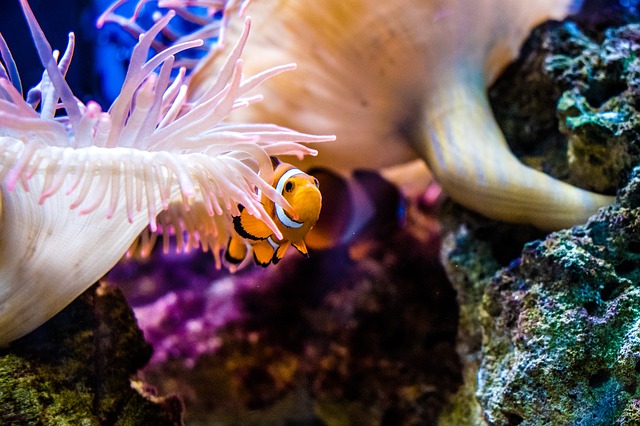
The number one reason most people use live sand is so they can jump-start their reef tanks cycle. By using live sand you are adding billions of microorganisms that will immediately start consuming ammonia from the water. That means you can add fish and coral sooner instead of waiting up to a month for an old-fashioned cycle.
Live sand also has a diverse range of microorganisms that can sometimes only be found in nature. These bacteria can be more efficient at processing waste than the bacteria that colonize your tank from your local environment.
Since live sand is basically ready right out of the bag, that means you can slowly start adding fish and coral as soon as possible. Of course, you should always test your water before adding any fish or coral to your tank to make sure your ammonia levels are acceptable.
Even though live sand can help speed up the cycling process it can still take a little time to get established. A good rule of thumb when you start a tank with live sand is that you should only add 1 inch of fish for every gallon of water. Once your tank is established you can increase that amount but you should always be careful not to disturb your reef tanks balance.
Adding Live Sand to an Aquarium
Mixing Live Sand with Regular Sand
There are a couple of things you need to consider before you add live sand to your reef tank. One thing you need to be aware of is that live sand is a little more expensive than regular saltwater aquarium sand or gravel. If you want to save a little money you can mix live sand with regular sand and still get the benefits of adding live sand to your aquarium.
How Much Live Sand
One question that commonly crops up is how many pounds of live sand will I need for my aquarium. While there is no single right answer a good rule of thumb is that you will need 1 pound of live sand for each gallon of water. This will be enough to create a nice even 1 to 2-inch layer of sand in most reef tanks. Although, if you want a deeper sand bed you can get 1.5 to 2 pounds of sand per gallon.
Water Cloudiness
One thing you might notice when you add live sand to your new reef tank is that the water will be very cloudy. This is completely normal, and in most cases, the particles will settle in a few hours. Some finer grain sand might take up to a day to settle though, so you should leave the tank overnight before you turn on any pumps or filters.
Certain fine grain varieties of Carib Sea live sand also comes with a packet of water clarifier, which can be added to your tank to speed up the settling process. If you prefer not to use a water clarifier you can rinse the sand in dechlorinated water. This will help remove some of the smaller particles before you add the sand to your aquarium. This is also a good idea if you are adding live sand to an already stocked tank since it will help protect your fish from any sand floating around in the water.

